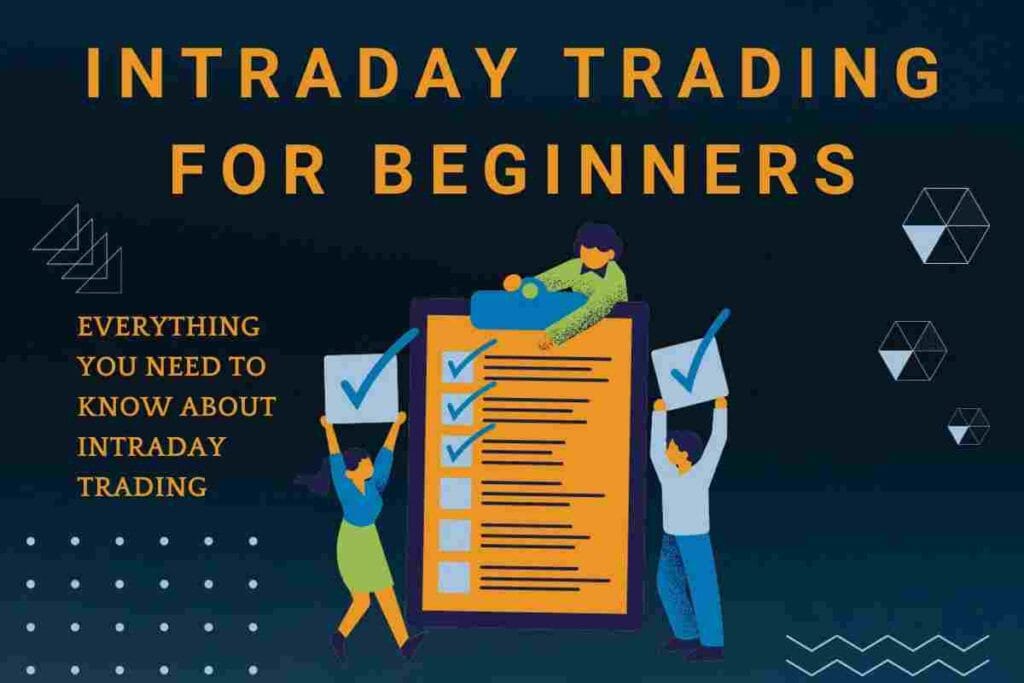Intraday trading refers to the practice of buying and selling financial instruments such as stocks, or commodities within the same trading day. The goal is to capitalize on short-term price movements to make profits, rather than holding positions overnight.
In intraday trading, positions are squared off (closed) before the market closes. It requires constant monitoring of market trends, technical indicators, and price movements throughout the day.
Key Features of Intraday Trading
Short-Term Focus:
- Trades are settled within the same day.
- No overnight exposure to price fluctuations.
Leverage and Margin:
- Many brokers offer margin trading, enabling traders to trade with funds exceeding their account balance.
- This increases both potential profits and risks.
High Liquidity:
- Traders usually target highly liquid assets to ensure quick entry and exit at desirable prices.
Use of Technical Analysis:
- Traders rely on charts, patterns, and indicators such as moving averages, RSI (Relative Strength Index), and MACD (Moving Average Convergence Divergence) for decision-making.
Volatility Dependence:
- Intraday trading thrives on volatility, as significant price movements provide more opportunities for profits.
Risk Management Tools:
- Stop-loss and target orders are critical for controlling risks and locking in profits.
What is the best strategy for Intraday Trading?
Momentum Trading
- Look for stocks or instruments showing strong trends with high volume.
- Use indicators like the Relative Strength Index (RSI) and Moving Average Convergence Divergence (MACD) to confirm momentum.
Breakout Trading
- Identify key support and resistance levels.
- Enter a trade when the price breaks through these levels with increased volume.
Scalping
- Focus on small price movements and execute multiple trades throughout the day.
- Requires fast decision-making and low latency for order execution.
Reversal (Counter-Trend) Trading
- Identify overbought or oversold conditions using Bollinger Bands.
- Trade in the opposite direction of the prevailing trend, aiming for quick profits during reversals.
Gap and Go Strategy
- Look for stocks with significant price gaps at the market open due to news or earnings.
- Strong volume and technical patterns support trade in the direction of the gap.
VWAP Strategy
- Use the (VWAP) as a benchmark.
- Go long when the price is above the VWAP and short when it is below, especially in trending markets.
Trend-Following
- Use moving averages (e.g., 20-day EMA and 50-day SMA) to identify trends.
- Buy on pullbacks in an uptrend and sell on rallies in a downtrend.
Which Intraday Trading is most successful?
Scalping:
- Involves making numerous trades to capture small price movements, often within seconds or minutes.
Momentum Trading:
- Traders look for stocks showing strong upward or downward trends and trade in the direction of the momentum.
Breakout Trading:
- Focuses on entering positions when a stock price breaks above resistance or below support levels.
Range Trading:
- Involves identifying support and resistance levels and trading within the established range.
News-Based Trading:
- Traders react quickly to news or economic data that can cause short-term market fluctuations.

Advantages of Intraday Trading
- Quick Profits: Opportunities to earn profits in a single day without waiting for long-term investments to mature.
- No Overnight Risks: Positions are closed within the day, eliminating risks from overnight news or market changes.
- Flexibility: Funds are available to trade every day since there’s no long-term commitment.
- Profit from Both Directions: Ability to short-sell and profit from falling prices.
Disadvantages of Intraday Trading
- High Risk: Significant risk of losses, especially for inexperienced traders.
- Stressful: Requires constant monitoring and quick decision-making, which can be mentally taxing.
- High Transaction Costs: Frequent trading leads to increased brokerage fees and taxes.
- Leverage Risks: While leverage amplifies profits, it can also lead to substantial losses.
Requirements for Intraday Trading
Brokerage Account with Intraday Facility:
- A trading account with a broker offering intraday trading and margin services.
Market Knowledge:
- Understanding of stock markets, technical analysis, and trading strategies.
Risk Management:
- Setting stop-loss and target levels to minimize risks and lock in profits.
Discipline:
- Staying calm and avoiding impulsive decisions is crucial for success.
Technology:
- Access to a high-speed internet connection and trading platforms with real-time data and charting tools.
Who Should Consider Intraday Trading?
- Individuals with time and dedication to monitor markets during trading hours.
- Those with a good understanding of technical analysis and trading strategies.
- Traders willing to take calculated risks for potentially higher rewards.
Intraday trading offers significant opportunities for short-term profit but requires skill, discipline, and constant attention. For beginners, starting with a sound strategy, proper risk management, and limited capital is essential. As traders gain experience, they can explore more advanced techniques to enhance their profitability.
Know More -> Delivery Trading: Everything You Need to Know
Know More -> How many types of trading are there? For Beginners




Your article helped me a lot, is there any more related content? Thanks!